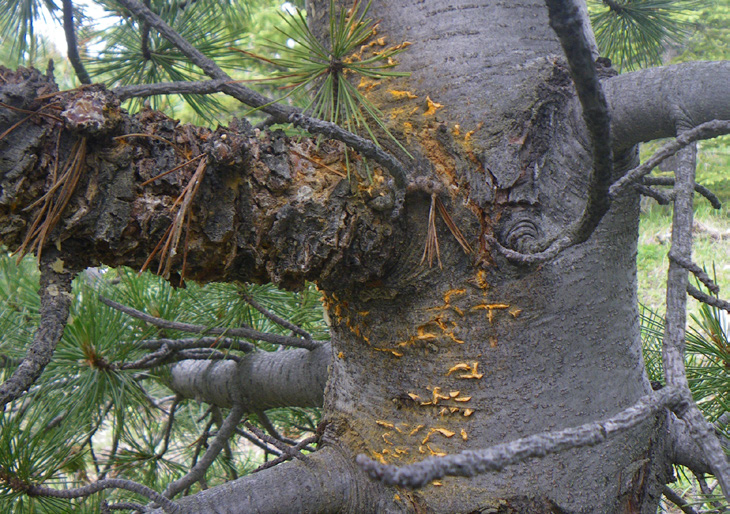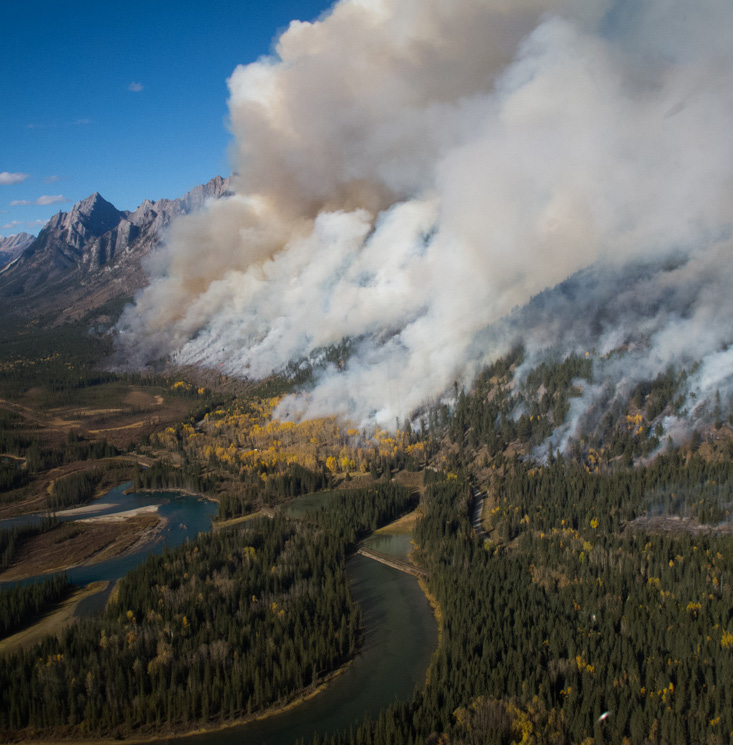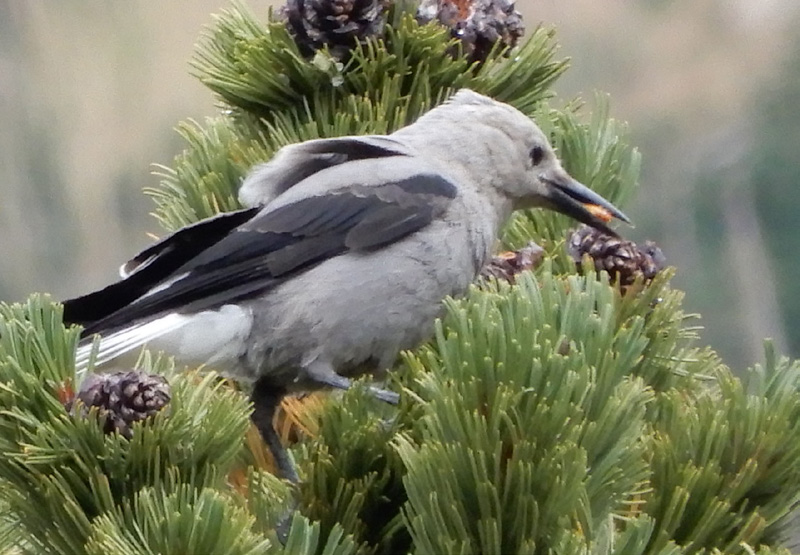Protecting five-needled pine species at risk in Banff National Park
Banff National Park
Whitebark Pine (Pinus albicaulis) is a keystone species of high elevation ecosystems in western North America. Listed as endangered in Canada’s Species at Risk Act (SARA), this species is in serious decline over much of its range due to the combined effects of white pine blister rust, mountain pine beetle, altered fire management regimes and climate change. Limber Pine (Pinus flexilis) grows at lower elevations than Whitebark Pine. It shares a similar ecology and threats to its survival. This species is recommended to be listed as endangered, and steps that are taken to conserve Whitebark Pine also benefit limber pine. Both Whitebark Pine and Limber Pine have needles that grow in bunches of five.Needles of five - keep them alive
Threats to five-needled pine species:
White pine blister rust

White pine blister rust (Cronartium ribicola) is a serious disease caused by a fungus affecting all five-needle pines. It was introduced to North America from Europe in the early 1900s. Since then it has spread and infected most five needle pine stands and has become the primary reason for decline in these pines’ population. The rust infects Whitebark and Limber Pine through the needles and spreads into the phloem of the tree. As the infection grows, the bark and phloem dies. Less than one percent of all Whitebark Pine is blister rust resistant.
Habitat Loss

Another significant threat to five needle pines is habitat loss resulting from fire suppression and climate change. Whitebark Pine grows best in open, sunny locations and relies on disturbances like fire to remove tree species that are competing for resources such as sunlight and water. Historically, fires would burn through tree stands removing the vegetation on the forest floor. Larger, or more intense fires would result in the removal of the tree canopy, creating the open space that Whitebark Pine needs to establish.
Decades of fire suppression have reduced the number of open spaces, hindered growth, and increased the amount of competition that Whitebark Pine faces. When five-needle pines have been weakened by other factors, they are more susceptible to forest insects such as mountain pine beetle.
White Bark Pine and the Clark's Nutcracker: An Important Partnership

Whitebark Pine and the Clark’s Nutcracker (Nucifraga columbiana) have evolved to depend on each other for survival. Whitebark Pine cones do not open on their own to disperse seeds. Clark’s Nutcrackers use their long, pointed beaks to break apart the large cones and remove the seeds. The birds “cache” the seeds to ensure a reliable source of food through the winter. A single bird can place thousands of seeds, just below the soil’s surface, each year. Roughly half the seeds are overlooked and many of these germinate and grow into seedlings.
Whitebark Pine and Limber Pine trees are protected by law in Banff National Park
Whitebark Pine and Limber Pine trees are protected by law under the Canada National Parks Act.
- It is illegal to cut, kill, or harm these trees; including causing damage to bark or roots.
- It is illegal to collect any parts, or individual samples, of these tree (e.g. cones, needles, bark, seedlings etc.).
Violators will be charged, be required to appear in court, and could pay fines up to $25 000.
The Whitebark Pine is also protected under Canada’s Species at Risk Act. If you witness anyone damaging or destroying a Whitebark Pine or Limber Pine, please observe, record and report this information to Banff Emergency Dispatch 403-762-1470, anytime day or night.
Where Can You Find Whitebark Pine and Limber Pine?
Whitebark Pine has evolved over time to become an important tree of the high elevation forests along the Rocky and Columbia Mountain chains. They are found in seven of Canada’s national parks: Mount Revelstoke, Glacier, Kootenay, Yoho, Jasper, Banff and Waterton Lakes.
Limber Pine grow at lower elevations in all of these mountain national parks except Mount Revelstoke and Glacier.
In Banff National Park:
Some notable areas where Whitebark Pine is found include Sulphur Mountain, Cascade Mountain, Cory Pass, Mount Norquay, Parker Ridge, Molar Pass and Bow Lake. Limber Pine occurs on Tunnel Mountain and the Fairholme Range, as well as in the Red Deer and North Saskatchewan River Valleys.
For information about five-needle pine in Banff National Park:
pc.banff.fireinfo-infofeu.banff.pc@canada.ca
Related links
- Date modified :